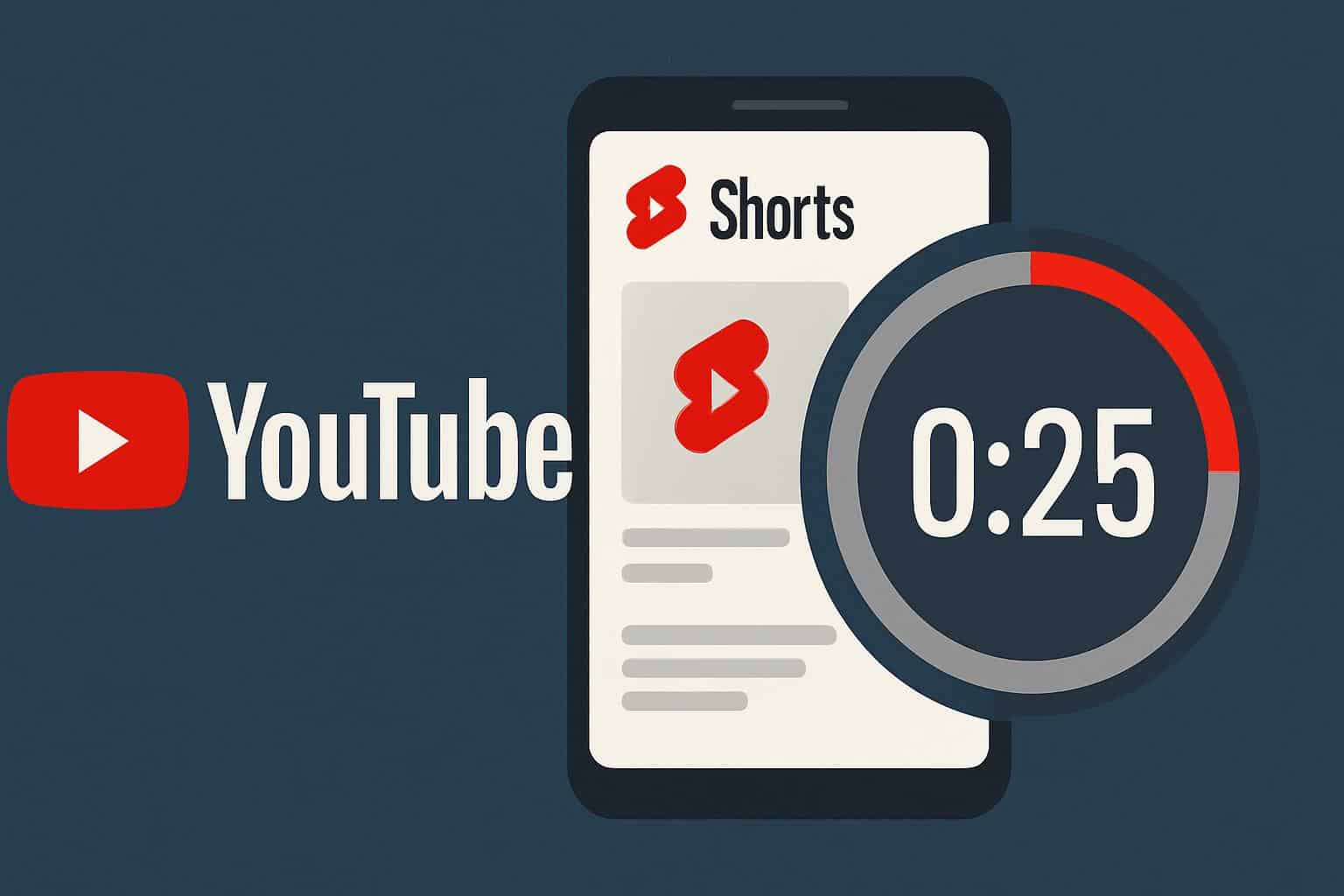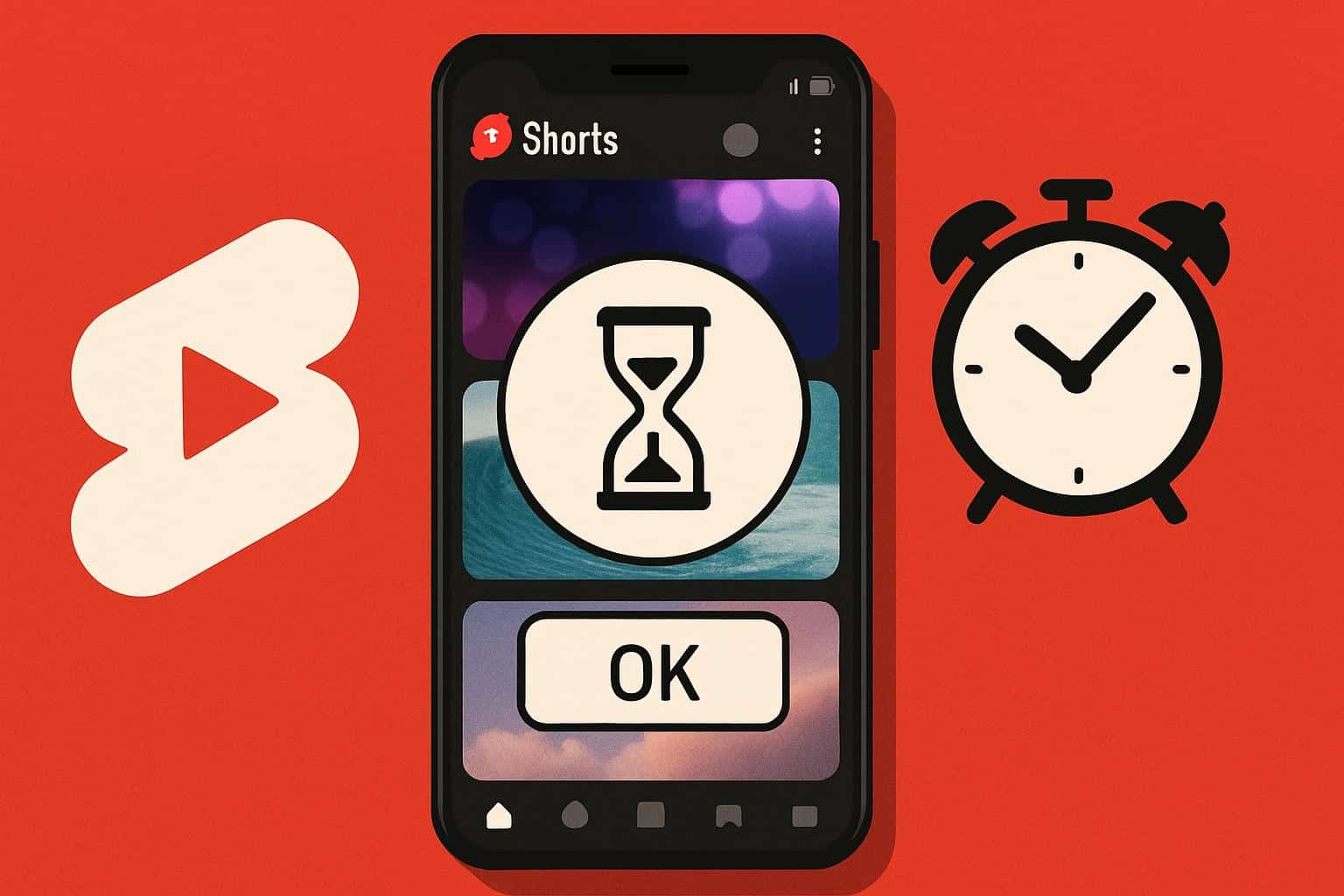YouTube is adding a timer specifically for Shorts, which will prompt viewers to take a break before one more hour slides away to the swipe. The numbers can be set as a daily limit for Shorts viewing, then it pops up when you reach that amount. It’s a mild speed bump — easily dismissed if you want to get back to watching, don’t get me wrong — but one that takes aim squarely at the endless scroll dynamic that makes short-form feeds so sticky.
The feature brings YouTube’s broader Digital Wellbeing toolkit to its fastest-growing format. Google has claimed that Shorts is reaching more than 2 billion logged-in users every month, and its vertical feed generates billions of views each day. A timer designed specifically for that loop is a pragmatic acceptance that product design can speed up or disrupt its addictiveness.

How the YouTube Shorts Timer Works to Prompt Breaks
There is a daily limit you can set for Shorts viewing within the YouTube app. Once you’ve crossed the threshold, a reminder pops over the feed telling you to take a break. You stay in charge: dismiss, snooze, or use it as a hard stop, however it fits your routine.
This joins YouTube’s existing Take a Break and bedtime reminders, which for a long time have enabled app-wide nudges on a schedule or after an interval. Like those features, the Shorts timer has been crafted so that it doesn’t interrupt in the middle of something awkward. YouTube’s breaks can pause until the current video is over, reducing friction but falling in line with the habit loop you’re working to build.
Earlier, YouTube indicated that a Shorts-targeted cap was coming, and the release has been covered on phones and tablets by Android Authority and TechCrunch. If it does not yet appear, it may be rolling out gradually. (Once it reaches your account, find it in the YouTube app’s settings under Digital Wellbeing or Shorts controls.)
Why This is Important for Digital Wellbeing
Short-form feeds leverage novelty and variable reward—two factors that make time-on-screen possible. Light-touch prompts like timers are what behavioral scientists sometimes call “choice architecture”: small interventions that make it easier for people to follow their intended behavior, rather than reining people in with heavy-handed rules. In practice, that means a well-placed reminder can cut minutes — or hours — off daily screen time.
The problem is real, mind you. According to data.ai, the typical user now spends in excess of five hours each day in apps. YouTube, the subject of a series of controversies in recent months, is the most common online platform among American teens. According to Pew Research Center, nearly all teenagers in America use YouTube — many of them do so regularly and consider themselves to be addicted to it. The American Psychological Association has connected doomscrolling to higher stress and anxiety, particularly when feeds combine entertainment with a steady flow of alarming news and commentary.

Crucially, timers are not meant to shame users. They add context to a contextless affair. A gentle nudge about how long you’ve been watching is often enough to help you choose sleep, a walk, or a task on your to-do list instead.
How It Compares With TikTok and Instagram
YouTube’s strategy falls somewhere in between. TikTok features strong screen time controls, which include daily limits, passcode controls for teenagers and a built-in tool to set scheduled breaks. Instagram has Take a Break prompts and Daily Time Limit alerts that require users to close the app at their self-determined daily limit. Apple’s Screen Time and Google’s Digital Wellbeing, at the operating system level, can limit usage across any app.
Having a control specific to Shorts is one reason for that precision. OS-level timers throw everything you watch on YouTube in the same pile, even if you are watching long-form videos, listening to music or learning from lectures. A separate Shorts timer focuses on an even more attention-grabbing section of the app without punishing other types of viewing.
How to Get Started With the Shorts Timer and What’s Next
To test out the timer, open the YouTube app, tap your profile photo and go to Settings. Search for Digital Wellbeing, or a Shorts section, to adjust your daily limit. Begin conservatively — say, 30 or 45 minutes — so the reminder comes while you’re still able to change gears.
YouTube plans to introduce more parental controls and other Shorts-focused safety measures, the company says. That would bring the platform closer in line with youth protections on rival services that let guardians put watch limits in place and demand passcodes for extensions.
What’s becoming clearer, though, is just how responsible platforms are for the environments they create. A strategically located timer won’t wholesale eradicate doomscrolling, but it can tilt the curve of attention back toward intention. For billions of viewers, it’s a nudge worth claiming.

